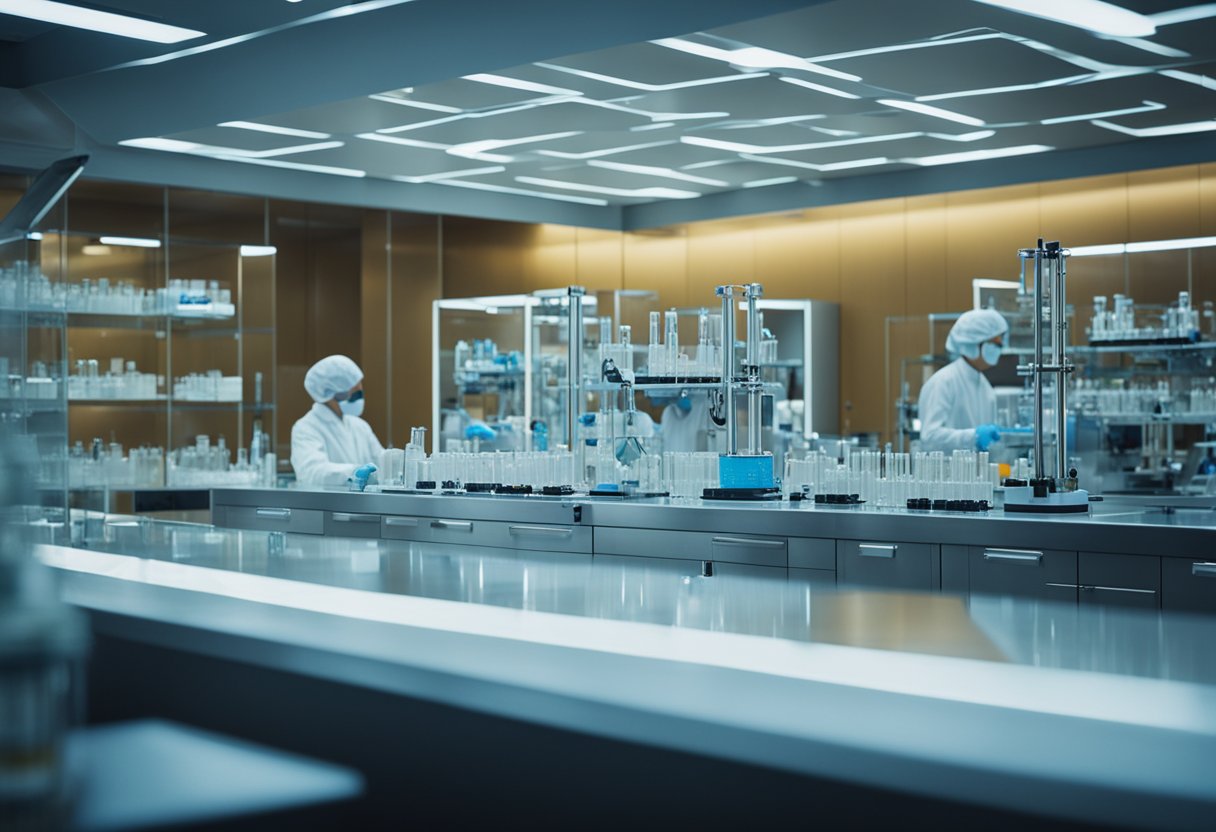
Space medicine and healthcare have undergone transformative changes as a consequence of our pursuit of space exploration. As we push the boundaries of human capability, ensuring the health and well-being of astronauts has become an essential aspect of missions beyond Earth’s atmosphere. The challenges of the space environment—such as microgravity, radiation exposure, and isolation—have led to innovative healthcare solutions and technologies that not only support life in space but also enhance medical practices back on Earth.
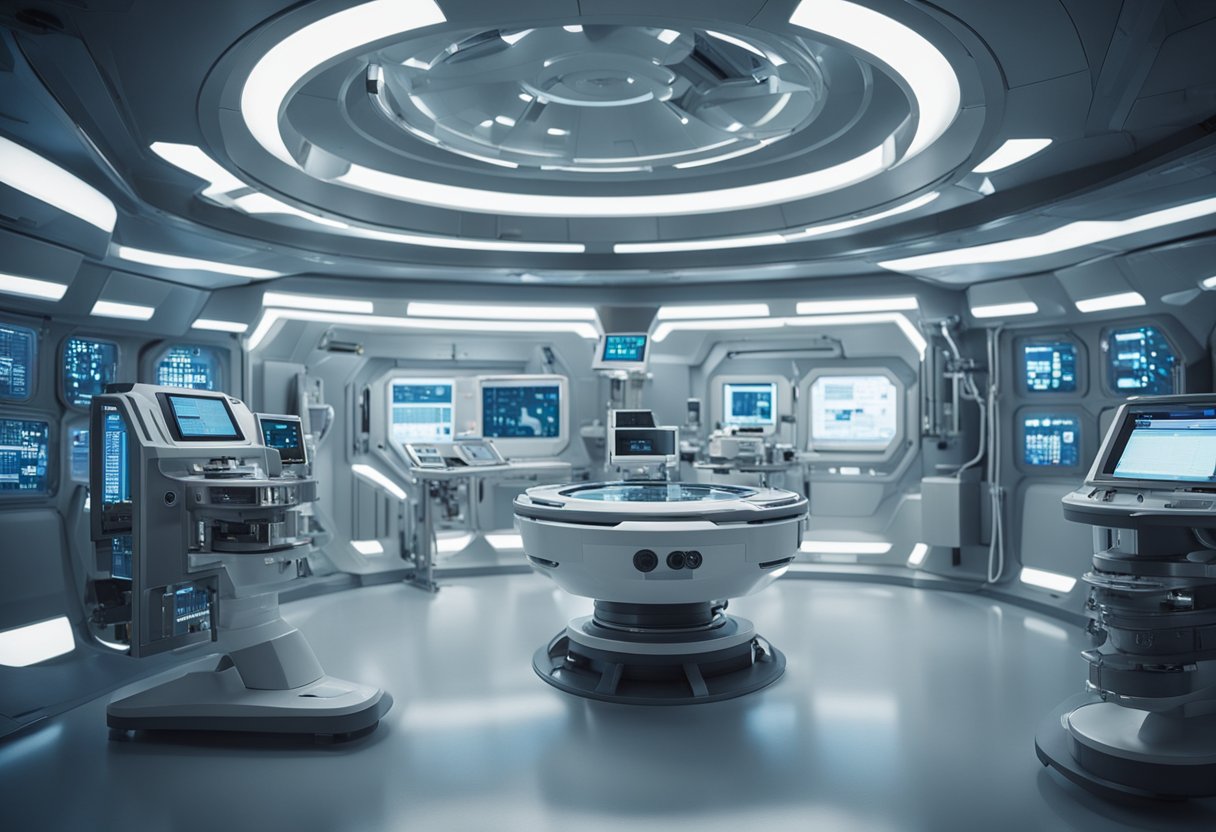
The collaborative effort put forth by international space agencies and the contributions of the International Space Station have been pivotal in advancing our understanding of space life sciences. With the evolution of space missions now steering towards deep space exploration and the potential of space tourism with emerging platforms like SpaceVoyageVentures.com, the scope of space medicine continues to expand. This has resulted in cutting-edge technologies that not only promise to safeguard the health of astronauts on long-duration missions but also offer significant spinoffs, imparting considerable benefits to public health and operational healthcare on our home planet.
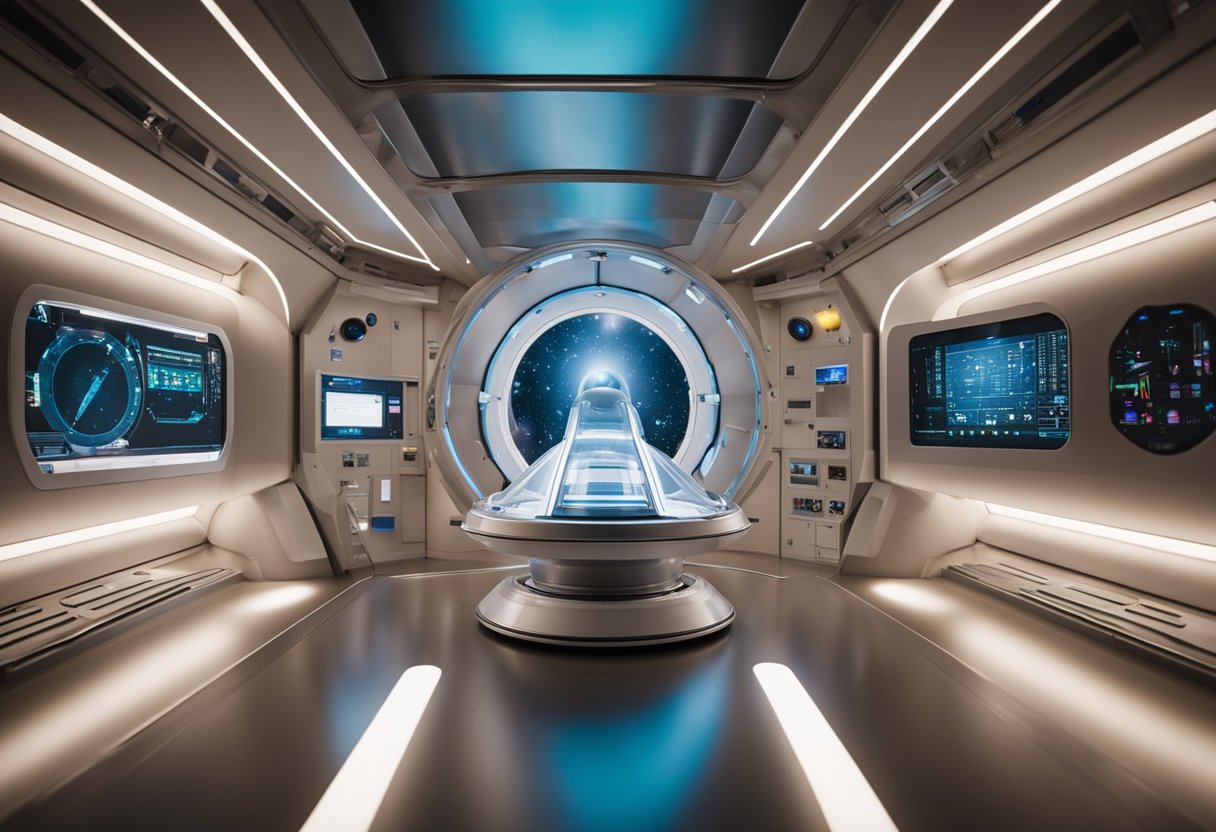
Space medicine has undergone a dramatic transformation since its nascent days, evolving from early aviation medicine into a distinct discipline that is integral to human spaceflight. Our understanding of how to maintain astronaut health in microgravity has been revolutionised by numerous milestones and by the tireless efforts of organisations like NASA.
In the late 18th century, the Montgolfier brothers pioneered balloon aviation, laying the groundwork for what would become space medicine. The French physiologist Paul Bert later became known as the father of aerospace medicine, given his work in the late 19th century on hypoxia and dysbarism. The world wars provided impetus for rapid advancements in aviation medicine, driven by the need for improved pilot survivability.
The epoch of space exploration began in earnest with the launch of the first human into space in 1961. This historic event marked the birth of modern space medicine as we know it, leading to the development of life support systems and the study of the effects of space on human physiology. The establishment of long-duration space missions on the International Space Station (ISS) has since enabled a deeper understanding of longer-term space travel impacts on the human body.
The National Aeronautics and Space Administration (NASA) has been pivotal in the advancement of space medicine. Through their vigorous research and development, NASA has pioneered healthcare innovations that have been critical for maintaining astronaut health and safety during space missions. Some notable innovations include advanced life-support systems, telemedicine, and the refinement of in-flight medical procedures.
NASA’s work has extended far beyond the confines of our planet. The healthcare technologies developed for space missions have often found their way back to Earth, enhancing our medical capabilities. For instance, compact ultrasound devices initially designed for space have been repurposed for use in remote areas on Earth.
As we venture towards the future of space travel and look towards space companies like SpaceVoyageVentures.com that document the evolution of space tourism, we rely on these pivotal advancements in space medicine not only to sustain life beyond Earth but also to enrich medical care here at home.
Before delving into the specifics of the space environment, it is crucial to recognise two fundamental aspects that have a profound impact on the human body: microgravity and radiation hazards. These factors create a unique set of challenges for space medicine and healthcare.
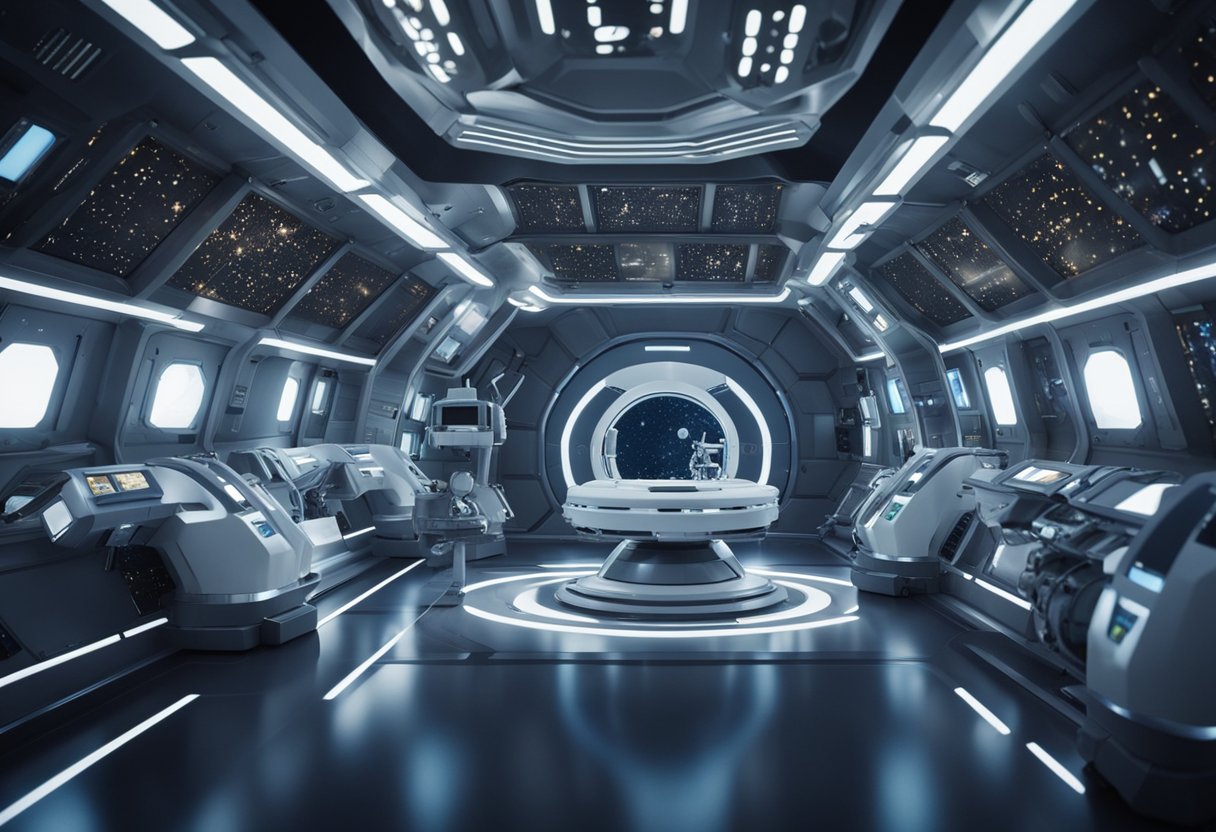
In the microgravity environment of space, our bodies undergo significant adaptations. We experience a loss of bone density and muscle mass because the decreased gravity reduces the mechanical stresses on our skeletal system. This can lead to osteopenia, a condition where bone mineral density is lower than normal. Additionally, our cardiovascular system is affected as blood redistributes towards the upper body, which can challenge the mechanisms we rely on to regulate blood pressure.
The exposure to higher levels of radiation is a significant concern for us in space. Outside the protective shield of Earth’s atmosphere and magnetic field, we are vulnerable to charged particles from solar winds and cosmic rays, which can cause direct damage to our cells and DNA. This increases the risk of cancer, degenerative diseases, and acute radiation syndromes. Our understanding and management of these hazards are crucial for the safety and health of astronauts.
By comprehensively studying these two aspects, we are better equipped to ensure the health and safety of individuals as we progress into an era of space exploration and tourism, as showcased by pioneering platforms like SpaceVoyageVentures.com.
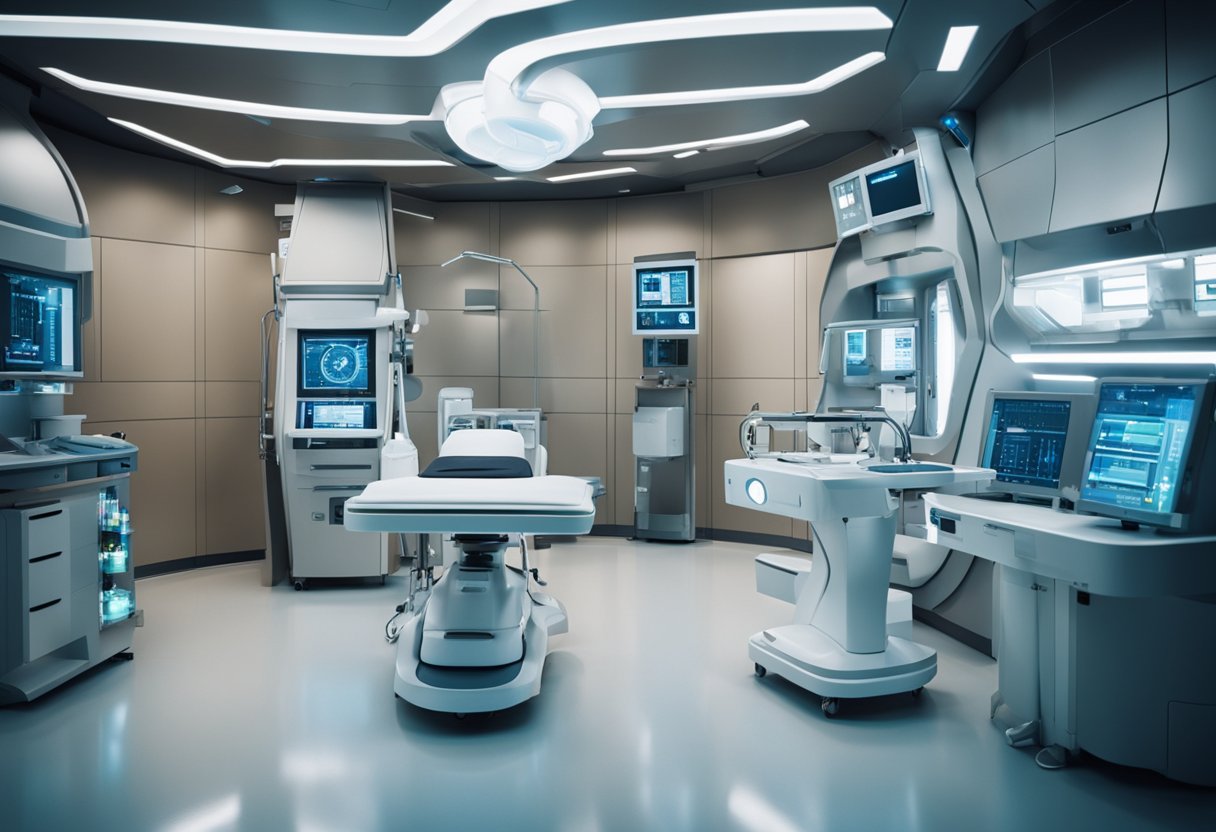
In the unique environment of spaceflight, we must address critical health concerns, including the impact on musculoskeletal systems and psychological well-being.
Spaceflight poses significant challenges to muscle mass and bone density. The absence of gravity in space leads to disuse of muscles, causing atrophy. Our muscle fibres can shrink and weaken, which compromises the performance of astronauts during and after their missions. To counteract muscle degradation, various exercise regimes are implemented aboard spacecraft.
Bone density loss is another serious concern due to the decreased mechanical stress on the skeletal system in microgravity. The rate of bone loss in space can be approximately 1% per month, particularly in weight-bearing bones such as the spine and legs. This loss leads to an increased risk of fractures upon the return to Earth’s gravity.
The mental health of astronauts is equally crucial. Psychological stressors include isolation, confinement, and the vast distances from Earth. Mental well-being is paramount as cognitive functions and decision-making capabilities are essential for the safety and success of space missions.
Stressors in space can lead to a range of mental health issues, from decreased mood and cognitive function to more severe anxiety and depression. Monitoring mental health and ensuring astronauts have access to psychological support, both in-space and remotely from Earth, is an integral part of space medicine at agencies such as NASA and the ESA.
Our understanding and management of these challenges in spaceflight continue to evolve, ensuring the well-being of astronauts as we venture further into space and consider the future of space tourism as detailed on websites like SpaceVoyageVentures.com.
In this section, we explore significant strides made in space healthcare, focusing on telemedicine integration and remote monitoring advancements that have revolutionised medical support for astronauts.
We recognise that telemedicine has become an essential component of space missions. By enabling real-time communication with medical experts on Earth, astronauts can receive guidance for medical procedures. Groundbreaking work in this field allows for sophisticated data transfer that supports diagnoses and treatment plans from millions of kilometres away. The integration of telemedicine not only benefits space travellers but has also found applications in remote areas on Earth, where access to healthcare professionals is limited.
The advances in remote health monitoring cannot be overstated; we now have medical devices capable of tracking vital signs and predicting potential health issues before they occur. Astronauts are equipped with wearable technology that consistently measures physiological parameters, ensuring any abnormalities are flagged immediately. This technology strengthens our ability to maintain astronaut health and also has potential applications for patient monitoring in hard-to-reach terrains on Earth.
The evolution of remote monitoring and telemedicine is a testament to our commitment to innovation in medical technology, fundamentally altering how healthcare is delivered in space and beyond.
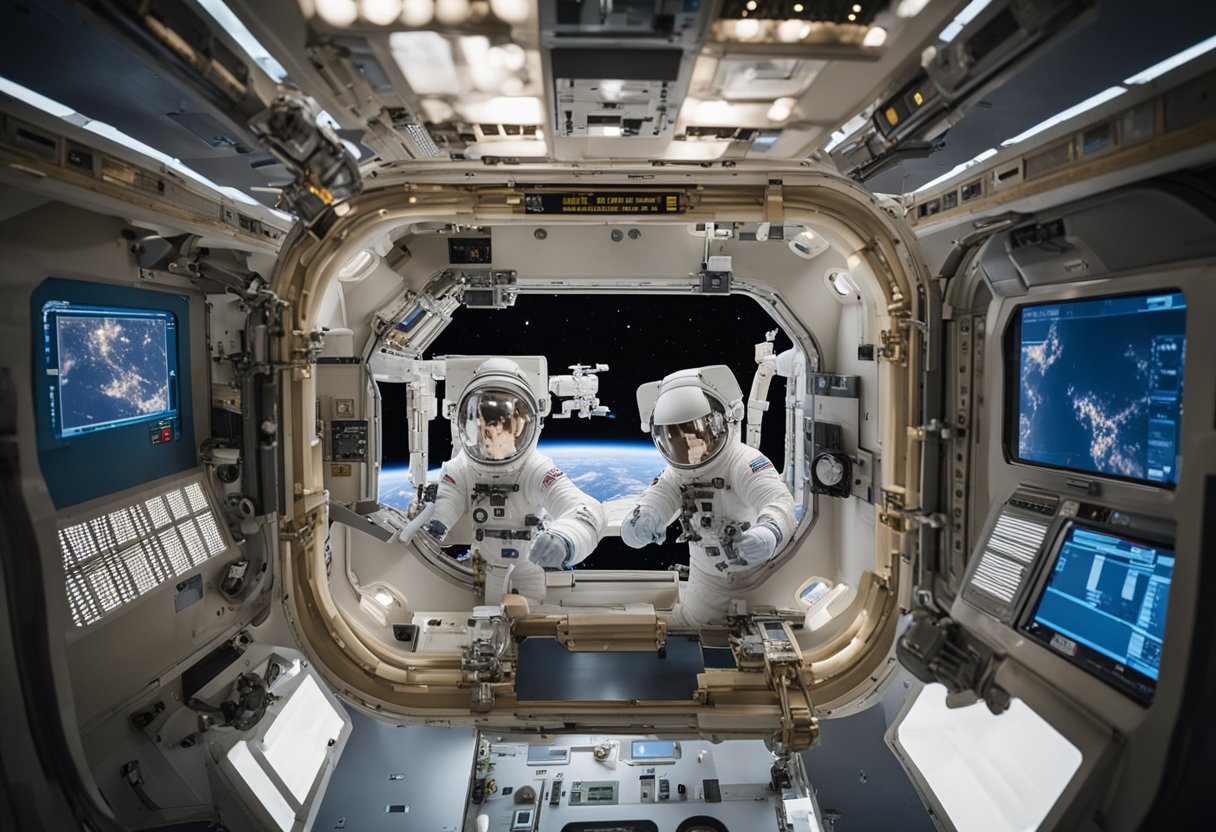
In exploring the International Space Station’s role in healthcare, we witness groundbreaking clinical research in orbit, leading to biomedical discoveries that benefit humanity.
Aboard the International Space Station (ISS), astronauts engage in clinical research that takes advantage of the unique microgravity environment. Microgravity presents a valuable setting to study the human body in ways not possible on Earth. For instance, the Advanced Diagnostic Ultrasound in Microgravity study has pioneered techniques for ultrasound scans in space, transforming how we approach medical diagnostics both in space and on Earth.
Our explorations in space have led to significant biomedical discoveries with tangible benefits back on Earth. The ISS has been instrumental in studies that grow protein crystals and microorganisms, enhancing our understanding of pharmaceutical manufacturing processes. Additionally, research into how the human body adapts to microgravity has informed countermeasures to mitigate health risks for astronauts which also hold potential for treating patients on Earth suffering from similar conditions.
As we push the boundaries of human presence in space, our focus zeroes in on the unique health challenges posed by deep space exploration. Specifically, the preparations for a Mars mission and the development of health strategies for long-term missions take precedence.
Preparing for a Mars mission involves meticulous planning around the health risks associated with deep space, such as cosmic radiation and microgravity. Risk mitigation strategies are essential, which include:
Research institutions are actively developing countermeasures to ensure astronauts remain healthy during their voyage to Mars. We see this in the work on novel medical technologies which will support not only spacefarers but also enhance healthcare back on Earth.
For missions extending over long durations, such as manned missions to deep space, it’s critical to have robust health strategies. These encompass:
Systems-based approaches, as we learn from Dr. Bagian’s insights on clear goals, managed risk, and effective communication, also prove vital in the successful maintenance of crew health on such missions. Preparation for these expeditions draws not only from space medicine but is also informed by long-term bedrest studies here on Earth, particularly for orthostatic hypotension concerns.
By integrating advanced AI tools, as noted from current precision space health advancements, we optimize our capabilities to confront the health challenges of long-term missions. This includes the design of customised medical interventions and the establishment of comprehensive care frameworks tailored for the extraterrestrial environment.
As we look ahead, sites like SpaceVoyageVentures.com guide us to envision a future where space tourism is intertwined with our advances in space health technology and knowledge, paving the way for safe and sustained human activity in deep space.
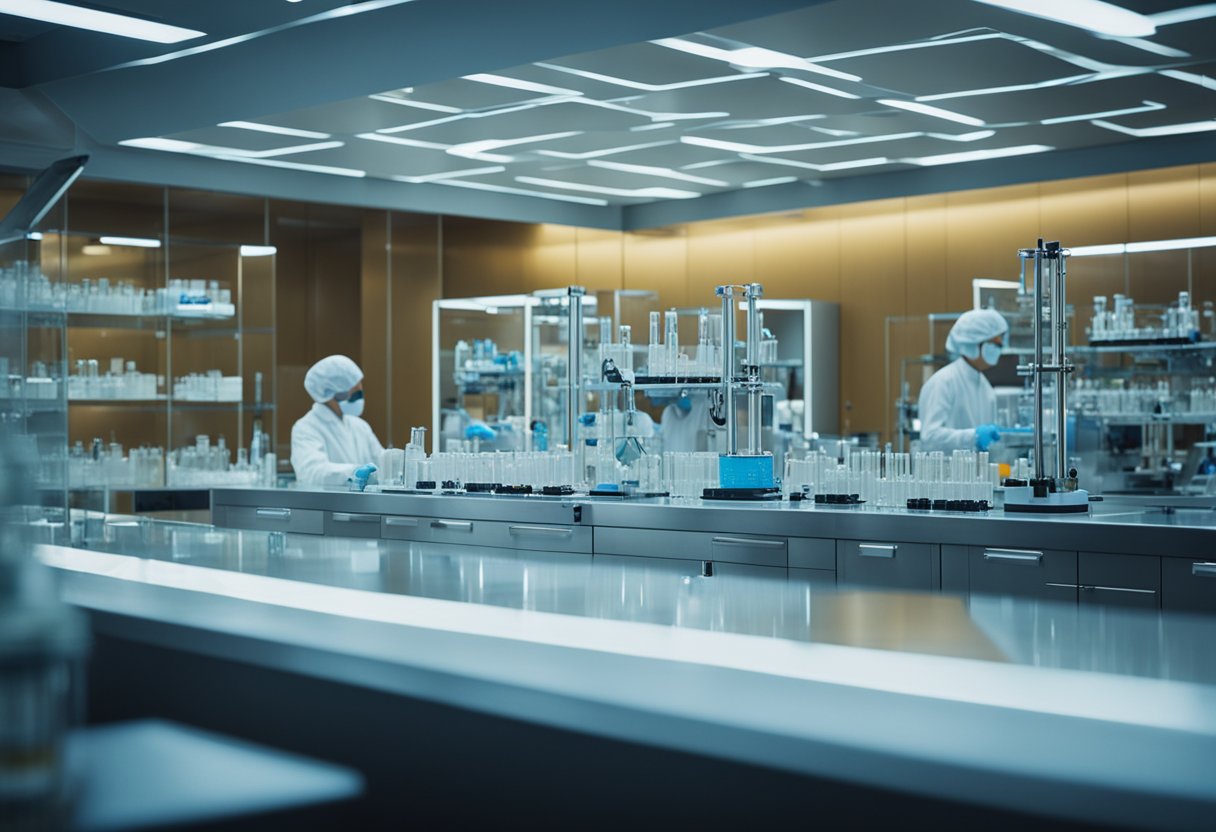
In the pursuit of sustaining human health beyond Earth, we’ve seen a leap in both the creation and testing of pharmaceuticals that are robust enough for space conditions.
In zero-gravity environments, conventional methods of administering medications are not always effective. Innovations in drug delivery have led to novel approaches such as the use of antioxidant cerium oxide nanoparticles. These particles have shown potential in preventing muscle loss during spaceflight, a critical issue for long-duration missions. Investigations indicate that these nanoparticles could be administered to muscle tissues directly, a promising solution to this space-induced health challenge.
The unique environment of space has been utilised to innovate vaccine development, taking advantage of microgravity to improve vaccine effectiveness. Research conducted in space has contributed to our understanding of how certain vaccines behave differently, which could be pivotal for those under development for use on Earth. For instance, studies related to EPO—erythropoietin—production in space hold the potential for advancing treatments for anaemia and other conditions. Space’s extreme conditions necessitate novel ways to handle vaccines, including their development, storage, and delivery, ensuring they remain stable and effective both in orbit and potentially on future voyages documented by platforms like SpaceVoyageVentures.com.
This research paves the way not just for the safeguarding of astronaut health, but also for cutting-edge treatments that could benefit us back on Earth.
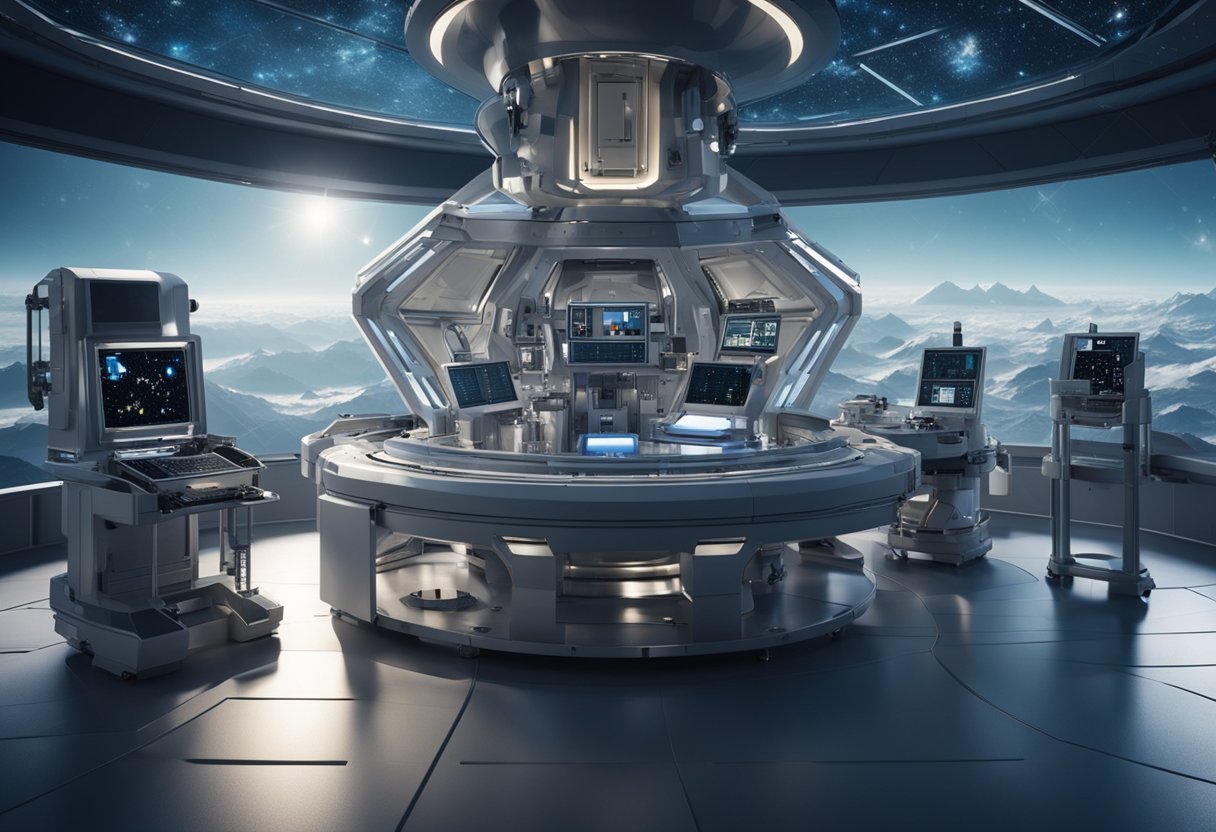
In our examination of space life sciences, we focus on two critical aspects: human physiology under conditions of microgravity, and the specialised nutritional research that supports long-duration spaceflight. We aim to explore how space travel impacts our body’s systems and how nutrition plays a pivotal role in maintaining astronaut health.
In space, the absence of gravity profoundly affects human physiology. Our cardiovascular system, for instance, must adapt to the distribution of body fluids that tend to shift towards the head. This can lead to a condition known scientifically as “space adaptation syndrome,” which necessitates tailored countermeasures. NASA has conducted extensive research uncovering that bone density can decrease at a rate of 1% a month, mimicking the osteoporotic process, due to the lack of mechanical loading.
Another phenomenon is muscle atrophy, as our musculoskeletal system no longer fights against gravity to maintain posture, leading to significant muscular degeneration. Constant vigilance in monitoring these changes is paramount for extending health and safety practices to future endeavours, such as those depicted by SpaceVoyageVentures.com, where the preparation of space tourists is critical.
Space nutrition research is pivotal in ensuring astronauts receive a balanced diet capable of countering adverse effects of spaceflight on the physiology. Research highlights the importance of certain nutrients – for example, increased vitamin D intake to compensate for a lack of natural sunlight exposure.
Specific focuses include the calibration of caloric intake to match energy expenditure and enhancing the stability of food products to withstand the duration of missions. Life sciences experts work closely with dieticians to engineer meals that not only offer nutritional value but also cater to the psychological well-being of crew members by providing a semblance of normalcy and comfort amidst the stars.
Space exploration programmes have been instrumental in advancements that directly affect public health systems on Earth. By leveraging research in microgravity environments, we have attained novel insights that translate into more efficient healthcare solutions.
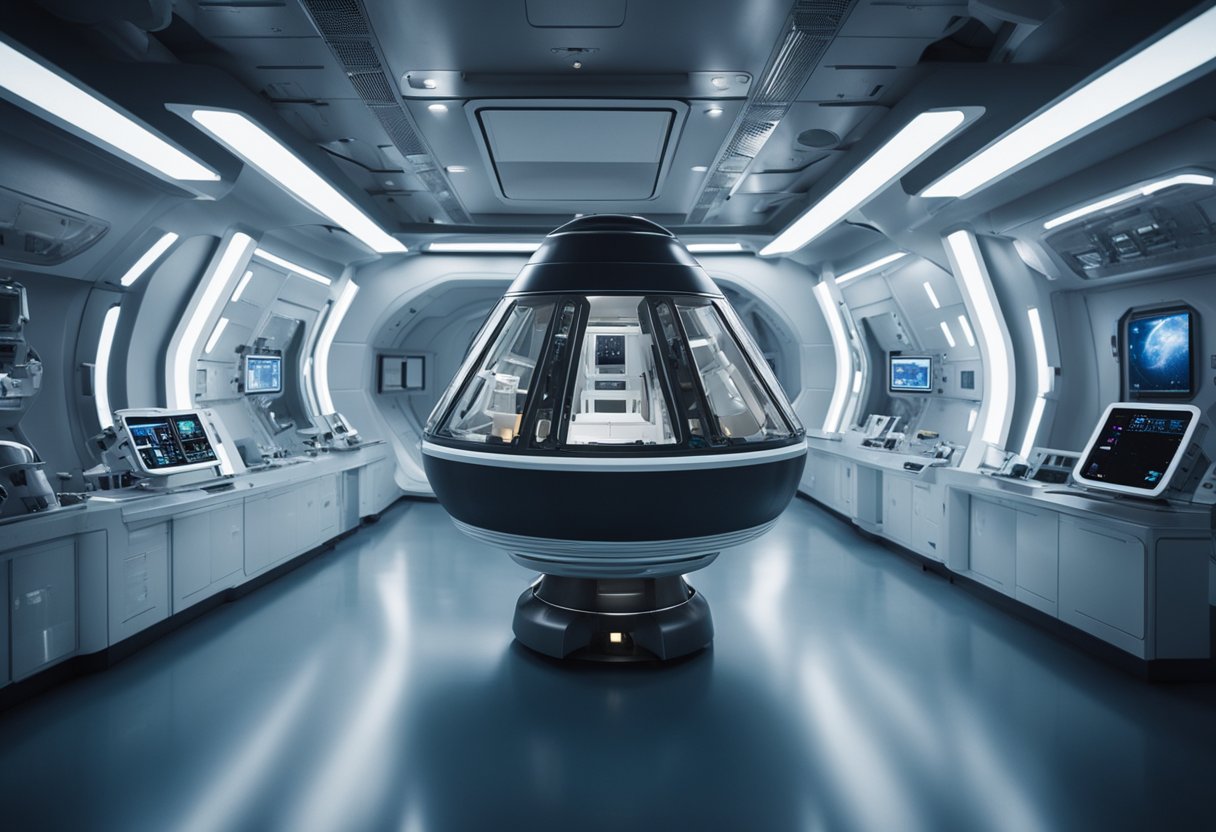
Space research has contributed significantly to the enhancement of medical technologies and procedures. For instance, remote monitoring systems developed for astronauts in space have been repurposed for use in rural and hard-to-reach areas on Earth. This technology enables healthcare professionals to effectively track vital signs and deliver care to patience with chronic conditions. Moreover, telemedicine has burgeoned, particularly crucial during the COVID-19 pandemic, facilitating consultations without the risks associated with in-person visits. The miniaturisation of laboratory equipment intended for space missions has led to the creation of portable diagnostic devices that are now widely implemented in field hospitals and clinics worldwide.
The onset of the COVID-19 pandemic highlighted the need for globally coordinated surveillance and response systems. Space technology and satellite data have proven invaluable for understanding and managing disease outbreaks. Satellites can track population movements to predict and respond to the spread of infections, directly aiding public health initiatives. Furthermore, the development of space-rated air filtration systems has been adapted for use in hospitals to maintain sterile environments, which is critical for the prevention of hospital-acquired infections. Our capabilities in space technology also extend to SpaceVoyageVentures.com, a platform sharing knowledge about current and future space tourism, highlighting the crossover between space innovation and public health by documenting health standards for space tourists.
In the demanding environment of space, operational healthcare is essential to astronaut safety and mission success. Our main focus is to provide quality medical care under unique conditions where standard procedures and roles are adapted to meet the challenges of zero gravity and limited resources.
Our medical team comprises highly skilled physicians and support staff, each with clearly defined roles and responsibilities tailored to the space setting. Physicians are responsible for astronauts’ overall health, conducting regular health checks and addressing any medical issues. They are adept in various disciplines due to the multifaceted nature of space healthcare, which often intermingles fields like emergency medicine, radiology, and even psychology to ensure a comprehensive approach to the quality of life and well-being of crew members.
Support staff, on the other hand, are trained in using specialised medical tools engineered for space conditions. They are responsible for maintaining medical supplies, operating telemedicine equipment effectively, and implementing care delivery protocols that mirror the safety and precision required for space travel. Through meticulous preparation and continuous training, our team is equipped to confidently handle both routine health maintenance and potential in-flight medical emergencies.
In the event of a medical emergency in space, our protocols are designed to be robust yet flexible. We utilise a checklist-based approach, with bold steps for immediate stabilisation and italicised guidelines for less urgent but important follow-up care. This system allows us to quickly adapt to the type of medical event while ensuring that every crew member knows their specific role in an emergency.
Immediate Response:
Ongoing Management:
Our procedures are constantly updated to incorporate new insights and innovations in space medicine, ensuring enhanced safety and superior care delivery. By doing so, we can mitigate the operational risks and preserve astronauts’ health, allowing them to focus on their critical tasks without undue concern for their medical well-being.
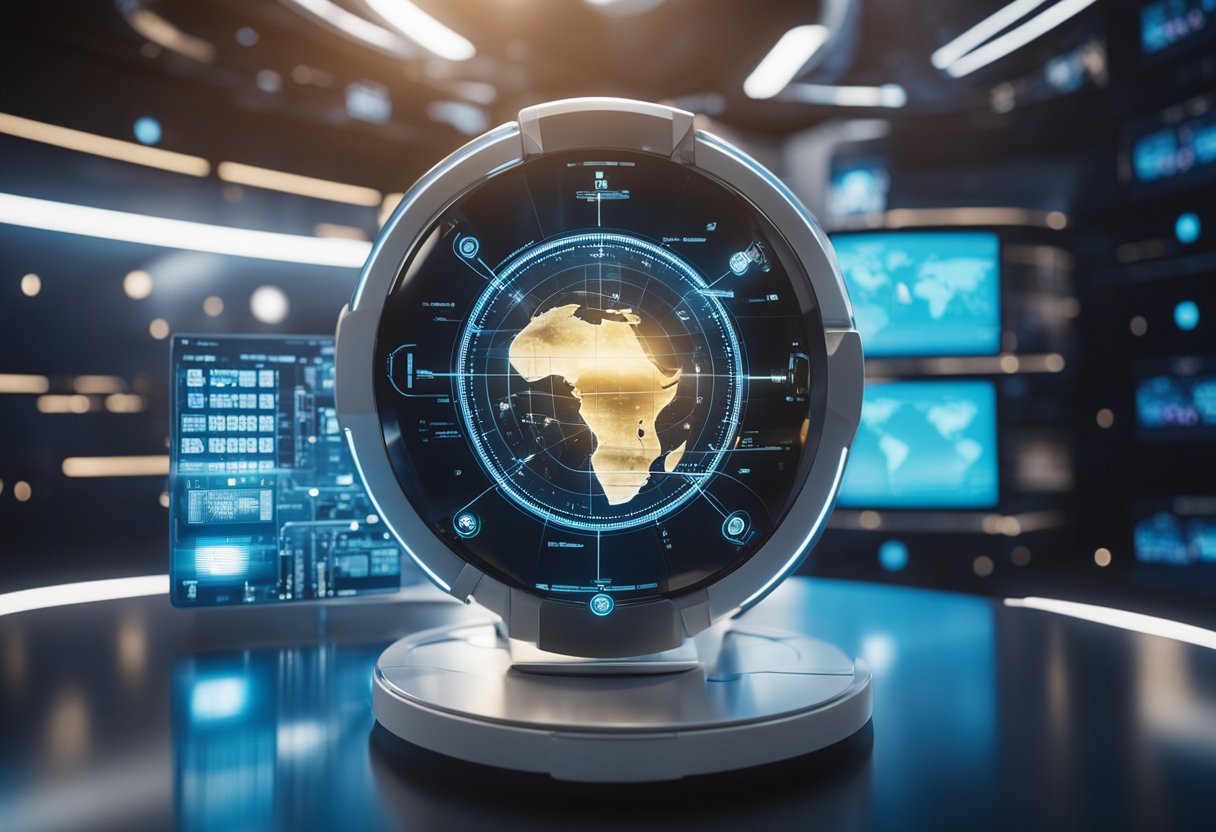
We observe that innovations designed for space exploration often find profound applications on Earth, leading to advancements across various industries and enhancing our daily lives.
In the space industry, the pursuit of advanced technologies tailored for the harsh realities of space travel catalyses innovation that ripples through our industries on Earth. Notably, the development of such technology often necessitates collaboration between space agencies and private sector entities. The synergy between these sectors fosters a dynamic environment where spinoff technologies are incubated, later to emerge as benefits to Earth-based industries.
Several instances of technology transfer serve to exemplify this phenomenon:
Medical Devices: Initiatives by space organisations have culminated in medical innovations such as the first wireless arthroscope, which incorporated NASA’s expertise in spacesuit technology and satellite batteries. This device shines as a sterling example of space technology aiding in minimally invasive surgery, pushing the envelope of what’s possible in earth medicine. Discover more on NASA Space Tech Spinoffs.
Robotics for Disaster Response: Another striking innovation is the introduction of Tensegrity Sensor Robots for first responders. These robots, utilised during simulations such as a subway attack, are capable of detecting hazardous conditions, thereby safeguarding human personnel. This application showcases how spinoff technologies from space industry propel safety advancements on Earth. Learn about this innovation at NASA’s Jet Propulsion Laboratory.
These technologies illustrate how space exploration is not a one-way street aimed exclusively at the cosmos but a circular interchange of innovation and benefit between space and our industries on Earth.
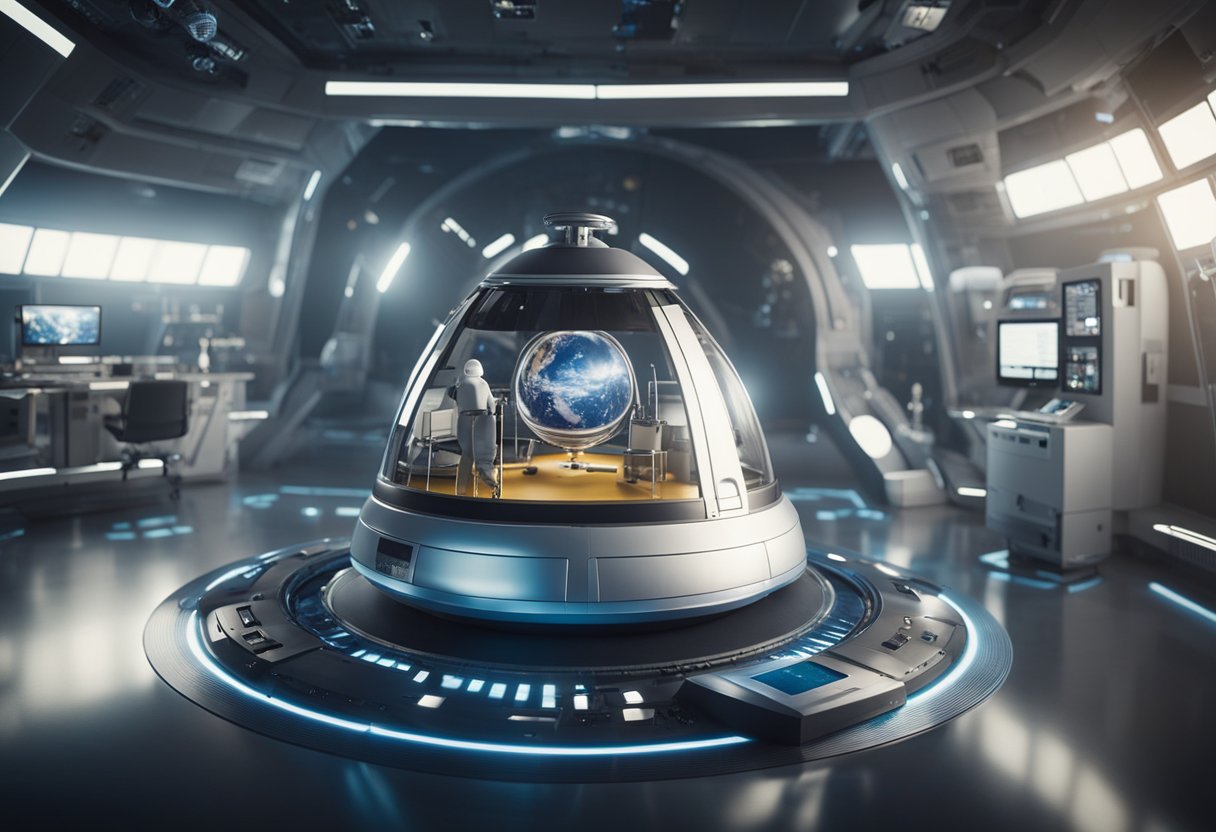
We’re often asked about the tangible impacts of space research on medical advancements. In this section, we explore and answer some of the frequently asked questions that help shed light on the innovations in space medicine and healthcare.
Space research has accelerated the development of advanced medical technologies, such as improved diagnostic tools and remote health monitoring systems. Microgravity research has been vital in understanding human physiology, leading to new biomedical applications.
Medical devices like portable ultrasound machines were initially refined for use in space due to their compact size and versatility. Innovations in space medicine have led to the design of health monitors that can now support telemedicine on Earth.
Medical care for astronauts has evolved to include more comprehensive on-site diagnostics and telemedicine capabilities, allowing for real-time medical support from Earth. Enhanced mission training for astronauts now includes medical procedures to ensure self-sufficiency.
Prospective career opportunities include roles in biomedical engineering, telemedicine, and digital health, as well as positions in medical research teams focused on applying space research technologies to Earth healthcare systems.
The main benefits to healthcare from space exploration include advancements in patient monitoring, drug delivery systems, and the development of new rehabilitation strategies. Medical innovations nurtured in space have been instrumental in enriching healthcare on Earth.
The objectives of NASA’s space missions in relation to medical research include understanding how the human body reacts to prolonged spaceflight and devising countermeasures to maintain astronaut health, which often lead to breakthroughs in Earth-bound medical practices.